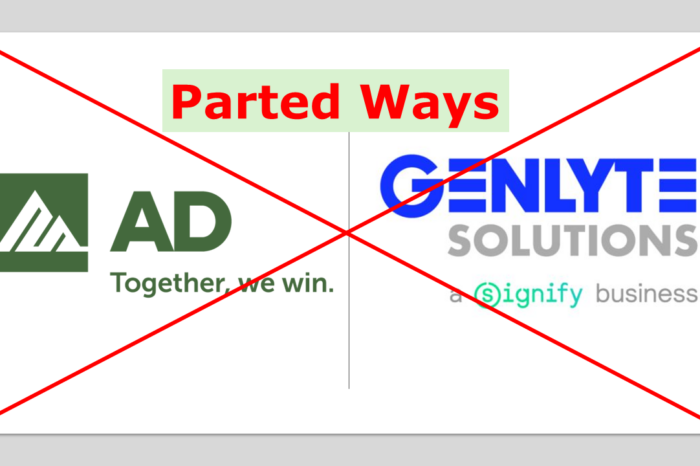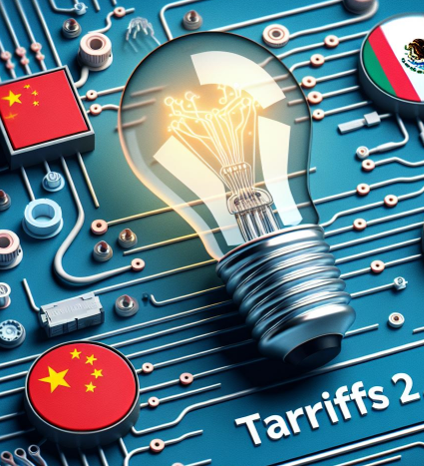Localizing Distribution Field Management Creates Competitive Advantages
 While the electrical industry undergoes the metamorphosis of its ownership structure with independents aging out and selling to larger companies (last year there were almost 30 deals, making for almost 90 in the past three years), the electrical distribution business continues to get done (meaning “orders and POs being written”) at the local level. This creates a conflict between localizing decisions to create differentiate and capture sales vs centralizing decisions in the name of efficiency and supporting corporate relationships.
While the electrical industry undergoes the metamorphosis of its ownership structure with independents aging out and selling to larger companies (last year there were almost 30 deals, making for almost 90 in the past three years), the electrical distribution business continues to get done (meaning “orders and POs being written”) at the local level. This creates a conflict between localizing decisions to create differentiate and capture sales vs centralizing decisions in the name of efficiency and supporting corporate relationships.
Recent research conducted by Channel Marketing Group regarding rebates continued to find that leading manufacturers lament that rebates are not the business driver that they desire due to “the field” making local decisions, driven by customer needs!
While distributors, as they grow, desire for more standardization to “optimize efficiency”, and there are process benefits, there can frequently become conflicts when it comes to achieving sales goals.
Desiree Grace, President Americas for Cembre, has shared thoughts on how localization initiatives can help manufacturers in interacting with their manufacturer representatives and empowering regional managers to add value to reps and distributors.
Now she treads into an area that, for many, represents controversy … distributors. Specifically, how the challenges, and opportunities, manufacturers face in developing localized distribution strategies. She also shares thoughts for distributors … how localizing can create sales opportunities.
Developing a Localized Distribution Strategy for Manufacturers
“In my prior two articles, I focused on how localizing and empowering Manufacturer Rep Agents and Regional Sales Managers can help manufacturers position their brand and increase market share. There is equal value in balancing your local and national strategies and tactics when considering Distribution.
Distributors are another force multiplier. The big challenge with this stakeholder group is mind-share and brand preference. In many cases, the decisions on a local level are made by inside and outside sales teams. Even if there is a “preferred corporate supplier” roster, local considerations typically allow for reasonable exceptions as the distributors fight for share in their local markets.
You may have the best corporate incentive program in the business (and recent CMG research on rebates affirms this), but that means nothing to the local sales team. Rare is the distributor whose incentive dollars hit the local branch, and often data about who pays what and how much stops at the Branch Manager. What does mean something is ease of doing business, relationships, plus your ability to help them win business (by delivering it to them or helping them win it.). Align with your rep agents on which distributors and which distributor locations are important to you both. Make sure the distributor knows you are viewing them as a partner, not just a transaction. Your RSM should have a relationship with the distributor Branch or District leadership that includes information sharing and them demonstrating their ability to understand the distributor’s perspective.
There are two ways to think about localizing business from a distributor perspective:
- Manufacturers can develop a distributor-specific focus that differentiates them to a distributor, or …
- Distributors can look at the market and say “how can I differentiate myself, or my branch, in this geographic area? What is the market’s / my customers’ unique, aggregated, needs. Some ideas were covered in the podcast.
Some areas that manufacturers could consider:
- Provide special treatment. This could be advance notice of new product launches, exclusivity on certain customers or projects, and flexibility on policies and procedures. Maybe you even go all in and provide into-stock pricing that is actually competitive.
- Build relationships. Another wise mentor showed me that today’s inside salesperson could be the branch manager down the road. Pay attention to the needs and problems of the inside team, the counter team, and the outside sales team. People buy from people they like, respect, and trust. Be one of those people. Discretionary business will go your way.
- Maintenance is part of your job. If you don’t expend time and resources to maintain the relationship, one of your competitors will swoop in and start taking your business. Plan and spend your time accordingly. As much as business development is mission critical, plan time for maintaining your business, and your relationships. Friendships die on the vine without nurturing. So do business relationship.
- Share information. Don’t just offer a rear window view of products sold, trends and other past-tense data. Yes, that is a valuable detail, but also share forward-looking data, such as potential price increases, supply chain challenges, planned new product launches, and significant updates about the organization and its team. If your VP of Sales is retiring next quarter, share that. It never sends a good message when the Branch Manager has to learn from your competitor that you just had a re-org. Share information about the market, Ket verticals where you can jointly have success. Competitive insights. Be a fountain of information. Most importantly, let them know the tools that your company has that can make them successful. Take the time to communicate proactively and regularly, especially with your best distributors.
- Seek to understand. Get to know your customers as businesspeople, and as people. Take the time to learn their compensation model, for example, of the inside, outside and branch management team. There are vast differences, and it pays to know what they are. A $25 gift card promo might be inconsequential to the outside salesperson but could be a motivator for the inside team. Maybe your branch manager is measured on gap analysis, and you can help with that. Maybe the distributor is an ESOP. That matters. Ask, listen, and learn.
How / why should distributors localize?
What is the benefit to them from a market and supplier perspective?
There are benefits to being one of a small, elite group of distributors for a given product line, such as more rep agent attention, lead sharing, and less competition. Distributors make it their business to know what their local competitors stock and who they partner with. Distributors also make it their business to know the Manufacturer distribution strategy.
- Intensive distribution means everyone or almost everyone in the market has access to the line. This tends to commoditize the vendor’s product and the only potential differentiators are price, inventory, and relationships. Relationships tend to be reactive, rather than proactive. Few distributors appreciate this approach.
- Selective distribution means the distributor has 1-2 competitors in the local market, 3, at most, depending on market size. In this case, they have fewer competitors and see the value in learning, and selling, features and benefits of this manufacturer. The manufacturer, in turn, is able to focus their efforts on the few who support them, and provide a greater value than the manufacturer who has an Intensive strategy.
- Exclusive distribution is great from a competitive perspective but can mean the manufacturer places demands on the distributor. This can be a huge advantage, but costly. Certainly, those manufacturers who follow this strategy benefit from a highly focused, highly motivated sales staff. Unless, of course, they take the relationship for granted, as they have no competition.
- Distributors use cost-benefit analysis when considering the addition of a new supplier. The costs could include more inventory in the category, another supplier to manage / learn, initial on-boarding investments, training of staff and customers, communication costs, to name a few. Do these costs outweigh the opportunity? Companies are “streamlining and standardizing” based upon a desire to seek cost-synergies. When considering the ROI of localizing inventory, especially against the corporate strategy, the distributor needs to articulate how this new supplier will help differentiate them against their competition, and what benefits they expect to receive. If they cannot articulate this, the potential exists that “corporate” vetoes the initiative. A really good manufacturer and their sales team should be able to help them craft that message upstream.
- A hybrid approach exists among some distributors in our industry. Back-office functions are centralized and standardized, while decision-making can still exist at a local level. Those distributors manage to gain share at a local level, while still operating in an efficient, profitable manner. Empowering local management to make supplier decisions is part of this strategy and it works very well for them. They know better than the corporate mother ship what their competition stocks, and what manufacturers and reps support them. There is value in NOT taking a “me, too” approach to supplier assortment that includes differentiation and the ability to capture spec-business.
In conclusion, there is no right or wrong answer to how much a distributor can or should localize. Much of it depends on the distributor’s strategy. However, if all your competitors are doing the same things and stocking the same manufacturers, you could be missing out on an opportunity to stand out from the crowd, get more than your fair share of manufacturer attention, and resources. You decide.”
Thoughts
While a number of distributors allocate rebates by branch to P&L’s to affect branch performance and potentially impact bonuses, the reality is that the information is too granular to drive salesperson performance. A salesperson needs to quote an order and “get it off the street.” Whether a supplier offers .5% more or 2 points more is not going to make a difference to a salesperson, nor will it motivate them to spend time converting the customer to another brand. They are paid on salary or % of GM. Back-end rebates don’t make it to their weekly / monthly commission check, let alone at a line-item basis. So, while reported, Desiree is right – they don’t impact what is sold. They can influence what is bought (for stock orders), maybe.
There are companies that are very decentralized with their line decisions, trusting their “branch” managers to make the right local decisions.
- CED is the best known for this and this is one of the reasons why they call their branches “profit centers.” The PC manager is responsible for revenue and profit decisions.
- City Electric is known to empower their branch managers with much autonomy in line selection.
- Sonepar historically did similarly with OpCo’s (operating companies) making local decisions. As OpCo’s have gotten much larger (with all now planning to be at least $1 billion) and US corporate more involved, the localization is less “preferred.” But they will still do what is necessary to capture an order.
All distributors will be opportunistic and will willingly “take” an order that is generated by a rep / manufacturer for them and service it as a project. They will also be responsive to customers who request a supplier’s brand (presuming they have access to the line.) The issue becomes when they are asked to stock the line. Will corporate allow local stocking decisions? This is the conundrum for a manufacturer. Support those who make no commitment?
As distribution consolidates, will this consolidate the brands that distributors stock, relegating others to only supporting projects? Will it resurrect rep warehouses? Drive non-stocked manufacturers to seek different types of distributors who will stock them? Will it create the reason why some manufacturers will sell direct, with the rep “taking / placing” the order and it being shipped from regional warehouses?
The electrical distribution business has always been a local business, serving local needs. Could empowering branch managers to make line decisions create a competitive advantage?
Localization vs Centralization?























